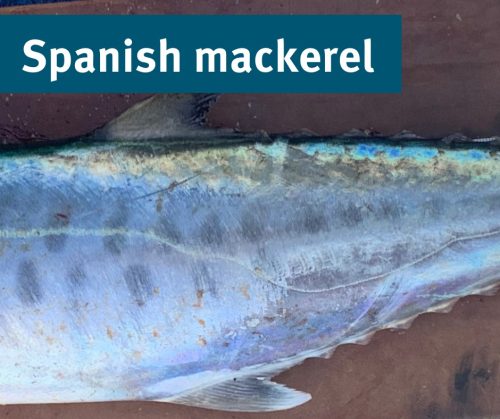Bundaberg Queensland Boating and Fisheries Patrol officers were conducting routine inspections when they found recreational fishers returning to the ramp with large numbers of school mackerel species.
Upon closer inspection officers started to ID juvenile spanish mackerel that had been misidentified as school mackerel. QBFP informed the fishers who were unaware of the basic identification factors.
Differences between mackerel species can be difficult to distinguish. A useful characteristic is the shape of the lateral line. The lateral line for spanish mackerel (top) dips abruptly above the lower section of the anal fin, whereas in school mackerel (bottom) it dips gradually with the lowest point a little further along the anal fin.
If you are unsure of the species you have caught, you can ID the species through the ‘Qld Fishing 2.0 App’ available from the Apple Store or Google Play.


Spotted mackerel (Scomberomorus munroi) is an important species for fishers throughout Queensland’s coastal waters. The species is also a component of the commercial inshore fin fish fishery, in which it is targeted by line fishers and caught as bycatch by net fishers.
In 2004, following significant changes to the management arrangements for spotted mackerel on Queensland’s east coast, the species was added to the Fisheries Queensland routine biological monitoring program. The monitoring program collects data each year on a range of recreational and commercial fish species. The biological information includes length, sex and age of fish being caught.
The biological information collected through the routine monitoring program is combined with other available information such as commercial catch and effort from compulsory logbooks and the recreational catch and effort from periodic phone and diary surveys. This combined information is then used to carry out regular assessments of the status of spotted mackerel stocks and evaluate the performance of management arrangements for the fishery.
 Bush ‘n Beach Fishing Magazine Location reports & tips for fishing, boating, camping, kayaking, 4WDing in Queensland and Northern NSW
Bush ‘n Beach Fishing Magazine Location reports & tips for fishing, boating, camping, kayaking, 4WDing in Queensland and Northern NSW









